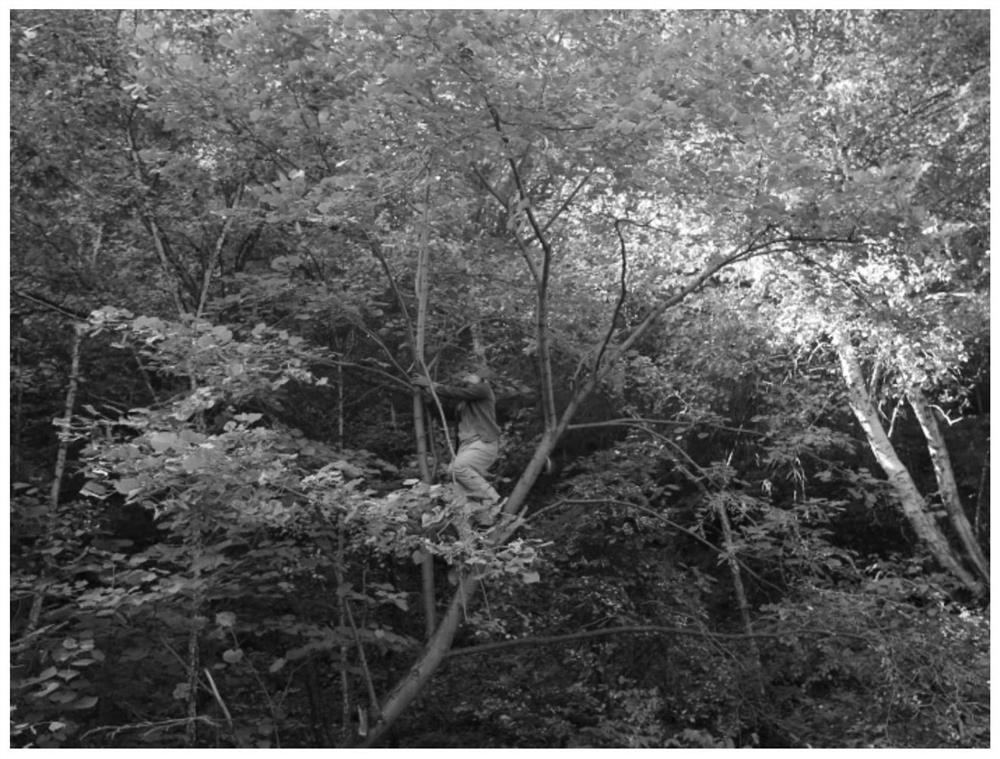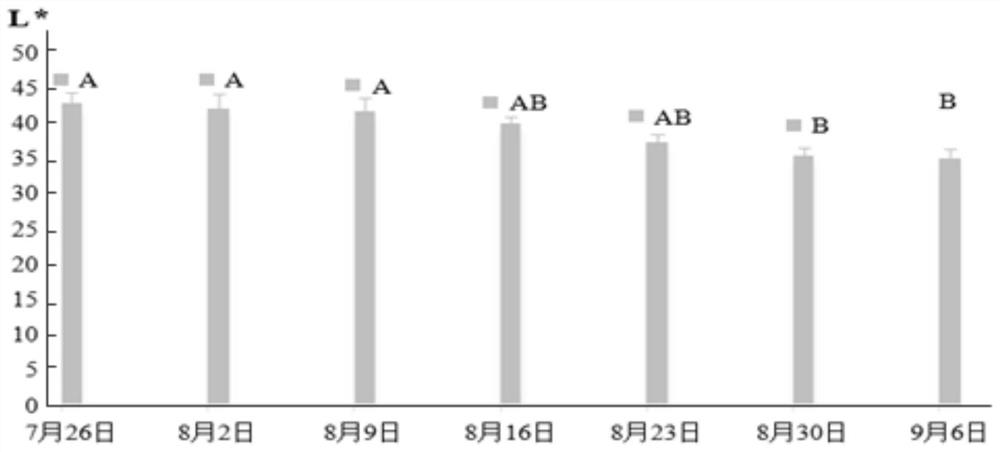Large-scale breeding method for tilia amurensis
A tilia and seed technology, applied in the direction of seed and rhizome treatment, cultivation, agricultural machinery and implements, etc., can solve problems such as obstacles to sustainable development and utilization, difficulties in seedling production, etc., to shorten germination time and uniformity, improve The germination rate and uniformity of emergence, and the effect of improving seedling vigor index
- Summary
- Abstract
- Description
- Claims
- Application Information
AI Technical Summary
Problems solved by technology
Method used
Image
Examples
Embodiment 1
[0036] A method for large-scale breeding of Tilia chinensis, comprising the following steps:
[0037] S1, seed collection, determine the specific date according to the color difference value observation of the pericarp, select the time when the seed is mature and the minimum value of the pericarp color difference value as the specific date of collecting seeds, the specific process is as follows:
[0038] I, from the end of July to the beginning of September, 2018, the Tilia japonica seeds were collected. The Tilia japonica fruit was collected in Nancheng Park, Beijing, and the tree was collected by artificial climbing. It was collected once a week and divided into 7 batches. The Konica Minolta CM-700D automatic colorimeter was used to measure the color of the peel, with an aperture of 3 mm, randomly selected 30 plump fruits with a moderate skin color, and recorded the L*, a*, b* values;
[0039] Among them, L* represents the brightness of gloss, the larger the L* value, the hi...
Embodiment 2
[0069] A method for large-scale breeding of Tilia chinensis, the concrete steps are basically the same as in Example 1, the difference is that:
[0070] In S2, linden seeds were soaked with 100 μg / g gibberellin for 50 hours, disinfected with 0.1% potassium permanganate for 5 hours, rinsed with water, and soaked in warm water at 27°C for 28 hours;
[0071] In S3, the volume ratio of seeds to wet sand was 1:2.5, stratified indoors at 15°C for 55 days, the depth of the storage pit was about 50 cm, and then spread in the storage pit, and a layer of wet sand 8 cm thick was spread on top, and finally Cover with 13cm thick topsoil and stratify at 0°C for 105 days;
[0072] In S4, the germination culture time is 28 days, the germination culture temperature is 25° C., the light duration is 10 h, and the filter paper is changed every 4 days.
Embodiment 3
[0074] A method for large-scale breeding of Tilia chinensis, the concrete steps are basically the same as in Example 1, the difference is that:
[0075] In S2, linden seeds were soaked with 150 μg / g gibberellin for 46 hours, disinfected with 0.2% potassium permanganate for 3 hours, rinsed with water, and soaked in warm water at 35°C for 20 hours;
[0076] In S3, the volume ratio of seeds to wet sand was 1:3.5, stratified indoors at 20°C for 65 days, the depth of the storage pit was about 60 cm, and then spread in the storage pit, and a layer of wet sand 12 cm thick was spread on top, and finally Cover with 16cm thick topsoil, and stratify at 4°C for 115 days at low temperature;
[0077] In S4, the germination culture time is 28 days, the germination culture temperature is 27° C., the light duration is 14 hours, and the filter paper is changed every 4 days.
PUM
| Property | Measurement | Unit |
|---|---|---|
| Depth | aaaaa | aaaaa |
Abstract
Description
Claims
Application Information
 Login to View More
Login to View More - R&D
- Intellectual Property
- Life Sciences
- Materials
- Tech Scout
- Unparalleled Data Quality
- Higher Quality Content
- 60% Fewer Hallucinations
Browse by: Latest US Patents, China's latest patents, Technical Efficacy Thesaurus, Application Domain, Technology Topic, Popular Technical Reports.
© 2025 PatSnap. All rights reserved.Legal|Privacy policy|Modern Slavery Act Transparency Statement|Sitemap|About US| Contact US: help@patsnap.com



